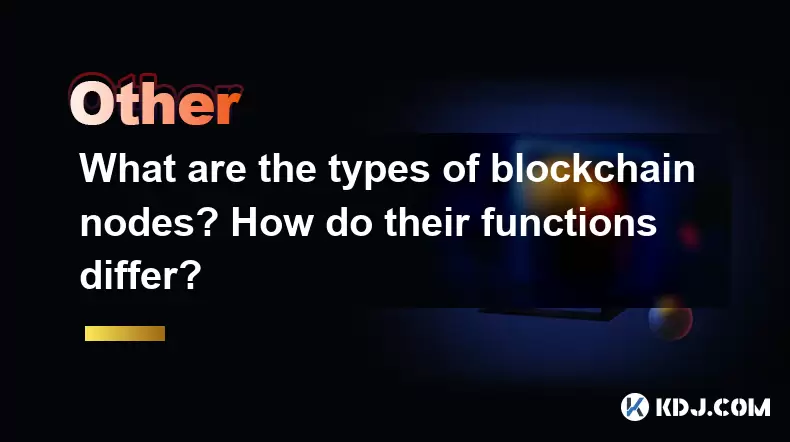-
 Bitcoin
Bitcoin $113900
-1.39% -
 Ethereum
Ethereum $3517
-4.15% -
 XRP
XRP $3.009
1.59% -
 Tether USDt
Tether USDt $0.9997
-0.04% -
 BNB
BNB $766.8
-1.41% -
 Solana
Solana $164.6
-2.38% -
 USDC
USDC $0.9998
-0.02% -
 TRON
TRON $0.3277
0.65% -
 Dogecoin
Dogecoin $0.2023
-1.67% -
 Cardano
Cardano $0.7246
0.05% -
 Hyperliquid
Hyperliquid $38.27
-4.77% -
 Sui
Sui $3.528
-0.52% -
 Stellar
Stellar $0.3890
-0.73% -
 Chainlink
Chainlink $16.16
-2.69% -
 Bitcoin Cash
Bitcoin Cash $539.9
-4.38% -
 Hedera
Hedera $0.2425
-2.00% -
 Avalanche
Avalanche $21.71
-0.97% -
 Toncoin
Toncoin $3.662
5.73% -
 Ethena USDe
Ethena USDe $1.000
-0.02% -
 UNUS SED LEO
UNUS SED LEO $8.964
0.35% -
 Litecoin
Litecoin $107.7
2.33% -
 Shiba Inu
Shiba Inu $0.00001223
-0.40% -
 Polkadot
Polkadot $3.617
-0.97% -
 Uniswap
Uniswap $9.052
-2.49% -
 Monero
Monero $295.1
-3.79% -
 Dai
Dai $0.9999
0.00% -
 Bitget Token
Bitget Token $4.315
-1.85% -
 Pepe
Pepe $0.00001060
0.11% -
 Cronos
Cronos $0.1342
-2.72% -
 Aave
Aave $256.0
-0.87%
What are the types of blockchain nodes? How do their functions differ?
Full nodes validate all transactions and blocks, ensuring blockchain integrity, while light nodes enable efficient interaction for resource-limited devices.
May 16, 2025 at 01:57 am

Introduction to Blockchain Nodes
Blockchain technology relies on a network of nodes to function effectively. Nodes are individual computers or devices that participate in the blockchain network, each playing a crucial role in maintaining the integrity and security of the system. Understanding the different types of blockchain nodes and their functions is essential for anyone interested in the inner workings of blockchain technology.
Full Nodes
Full nodes are the backbone of any blockchain network. They store a complete copy of the blockchain and validate all transactions and blocks. This comprehensive approach ensures that full nodes can independently verify the state of the blockchain, making them crucial for maintaining the network's integrity.
- Functionality: Full nodes download and store the entire blockchain, from the genesis block to the most recent block. They validate transactions and blocks against the network's consensus rules, ensuring that only valid transactions are added to the blockchain.
- Importance: By maintaining a full copy of the blockchain, full nodes help prevent fraudulent activities and ensure the network's decentralized nature. They are essential for the security and trustworthiness of the blockchain.
Light Nodes (SPV Nodes)
Light nodes, also known as Simplified Payment Verification (SPV) nodes, are designed for users who need to interact with the blockchain but do not require the full data set. These nodes store only the block headers and rely on full nodes for transaction validation.
- Functionality: Light nodes download only the block headers, which contain essential information such as the block hash and Merkle root. They use this information to verify transactions without needing the entire blockchain.
- Importance: Light nodes are crucial for mobile and resource-constrained devices, allowing users to interact with the blockchain without the need for significant storage and computational resources.
Archival Nodes
Archival nodes are a specialized type of full node that store not only the current state of the blockchain but also all historical states. This makes them invaluable for applications that require access to past blockchain data.
- Functionality: Archival nodes maintain a complete history of the blockchain, including all intermediate states. This allows them to provide detailed information about past transactions and states, which is useful for auditing and historical analysis.
- Importance: While not necessary for the basic operation of the blockchain, archival nodes are essential for applications that require historical data, such as blockchain explorers and forensic analysis tools.
Mining Nodes
Mining nodes, also known as miner nodes, are responsible for creating new blocks and adding them to the blockchain. They compete to solve complex mathematical puzzles, and the first to solve the puzzle gets to add a new block and is rewarded with cryptocurrency.
- Functionality: Mining nodes use significant computational power to solve cryptographic puzzles. Once a puzzle is solved, the mining node proposes a new block, which is then verified by full nodes before being added to the blockchain.
- Importance: Mining nodes are crucial for the creation of new blocks and the security of the blockchain through the proof-of-work consensus mechanism. They incentivize participation in the network and help maintain its decentralized nature.
Validator Nodes
Validator nodes are used in blockchain networks that employ a proof-of-stake (PoS) consensus mechanism. Instead of solving computational puzzles, validator nodes are chosen to create new blocks based on the amount of cryptocurrency they hold and are willing to "stake" as collateral.
- Functionality: Validator nodes are selected to propose and validate new blocks based on their stake. They must lock up a certain amount of cryptocurrency as a stake, which can be forfeited if they act maliciously.
- Importance: Validator nodes are essential for the operation of PoS blockchains, providing a more energy-efficient alternative to proof-of-work. They help maintain the security and integrity of the network by ensuring that only honest validators can participate.
Masternodes
Masternodes are a type of node used in certain blockchain networks, such as Dash, to provide additional services and functionalities. They require a significant investment in the native cryptocurrency to operate, which helps secure the network.
- Functionality: Masternodes perform tasks such as instant transactions, private transactions, and governance voting. They are rewarded for their services with a portion of the block rewards.
- Importance: Masternodes enhance the functionality of the blockchain by providing advanced features that are not possible with standard nodes. They also contribute to the network's security and decentralization.
Comparing the Functions of Different Nodes
Each type of blockchain node serves a unique purpose and contributes to the overall health and functionality of the network. Full nodes ensure the integrity of the blockchain by validating all transactions and blocks. Light nodes allow users with limited resources to interact with the blockchain efficiently. Archival nodes provide access to historical data, which is crucial for certain applications. Mining nodes and validator nodes are responsible for creating new blocks and maintaining the consensus mechanism, whether through proof-of-work or proof-of-stake. Masternodes offer additional services and enhance the network's capabilities.
Understanding the roles and functions of these nodes is essential for anyone looking to participate in or develop applications for blockchain networks. Each type of node plays a critical part in ensuring the security, efficiency, and decentralization of the blockchain.
Frequently Asked Questions
Q: Can a single device run multiple types of nodes?
A: Yes, a single device can run multiple types of nodes, provided it has sufficient computational power and storage. For example, a device can operate as both a full node and a mining node, although this would require significant resources.
Q: How do nodes communicate with each other in a blockchain network?
A: Nodes in a blockchain network communicate using a peer-to-peer (P2P) protocol. They exchange information such as transaction data, block headers, and validation results to maintain the integrity and synchronization of the blockchain.
Q: What happens if a node goes offline in a blockchain network?
A: If a node goes offline, the blockchain network continues to function as long as there are enough other nodes to maintain the consensus and validate transactions. However, the offline node will need to sync with the network once it comes back online to catch up on any missed transactions and blocks.
Q: Are there any risks associated with running a node?
A: Running a node, especially a full node or a mining node, can expose the operator to certain risks, such as increased electricity costs, potential hardware failures, and the need for constant maintenance. Additionally, nodes can be targets for cyberattacks, so security measures are essential.
Disclaimer:info@kdj.com
The information provided is not trading advice. kdj.com does not assume any responsibility for any investments made based on the information provided in this article. Cryptocurrencies are highly volatile and it is highly recommended that you invest with caution after thorough research!
If you believe that the content used on this website infringes your copyright, please contact us immediately (info@kdj.com) and we will delete it promptly.
- Solana, Axiom Exchange, and Revenue: Navigating the Future of DeFi
- 2025-08-02 12:50:12
- Cardano (ADA) and Altcoin Gains: Navigating the Crypto Landscape
- 2025-08-02 12:55:11
- Bitcoin's Bearish Momentum: Fakeout or the Real Deal?
- 2025-08-02 12:30:12
- Ethereum's Rocky Climb: Analysts Eye New ATH Despite Recent Dip
- 2025-08-02 10:30:11
- Ethereum Price, ETF Inflows, and ETH Tokens: What's Driving the Market?
- 2025-08-02 10:50:12
- Ethereum, ADA, and Price Support: What's Next for These Crypto Titans?
- 2025-08-02 10:50:12
Related knowledge

What is the double-spending problem and how does blockchain prevent it?
Aug 02,2025 at 01:07pm
Understanding the Double-Spending ProblemThe double-spending problem is a fundamental challenge in digital currency systems where the same digital tok...

What is the difference between a blockchain and a database?
Aug 01,2025 at 09:36pm
Understanding the Core Structure of a BlockchainA blockchain is a decentralized digital ledger that records data in a series of immutable blocks linke...

How does blockchain handle scalability?
Aug 02,2025 at 02:58pm
Understanding Blockchain Scalability ChallengesBlockchain scalability refers to a network's ability to handle an increasing volume of transactions wit...

What is a hash in a blockchain?
Aug 02,2025 at 05:28am
Understanding the Concept of Hash in BlockchainA hash in the context of blockchain technology refers to a unique digital fingerprint generated by a cr...

What is a hash in a blockchain?
Aug 02,2025 at 04:43am
Understanding the Concept of Hash in BlockchainA hash in the context of blockchain technology refers to a unique digital fingerprint generated by a cr...

Who created blockchain?
Aug 02,2025 at 05:15am
What Is Blockchain and Why Does Its Origin Matter?Understanding who created blockchain begins with recognizing what blockchain actually is. Blockchain...

What is the double-spending problem and how does blockchain prevent it?
Aug 02,2025 at 01:07pm
Understanding the Double-Spending ProblemThe double-spending problem is a fundamental challenge in digital currency systems where the same digital tok...

What is the difference between a blockchain and a database?
Aug 01,2025 at 09:36pm
Understanding the Core Structure of a BlockchainA blockchain is a decentralized digital ledger that records data in a series of immutable blocks linke...

How does blockchain handle scalability?
Aug 02,2025 at 02:58pm
Understanding Blockchain Scalability ChallengesBlockchain scalability refers to a network's ability to handle an increasing volume of transactions wit...

What is a hash in a blockchain?
Aug 02,2025 at 05:28am
Understanding the Concept of Hash in BlockchainA hash in the context of blockchain technology refers to a unique digital fingerprint generated by a cr...

What is a hash in a blockchain?
Aug 02,2025 at 04:43am
Understanding the Concept of Hash in BlockchainA hash in the context of blockchain technology refers to a unique digital fingerprint generated by a cr...

Who created blockchain?
Aug 02,2025 at 05:15am
What Is Blockchain and Why Does Its Origin Matter?Understanding who created blockchain begins with recognizing what blockchain actually is. Blockchain...
See all articles

























































































